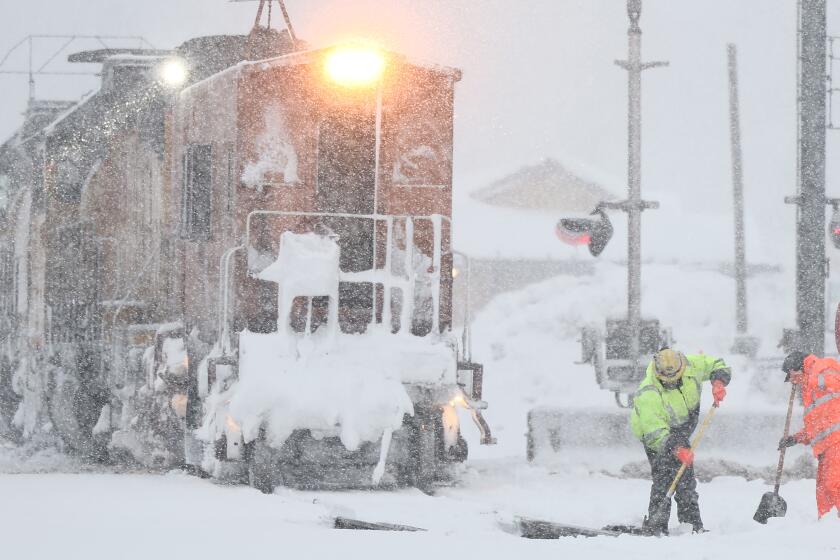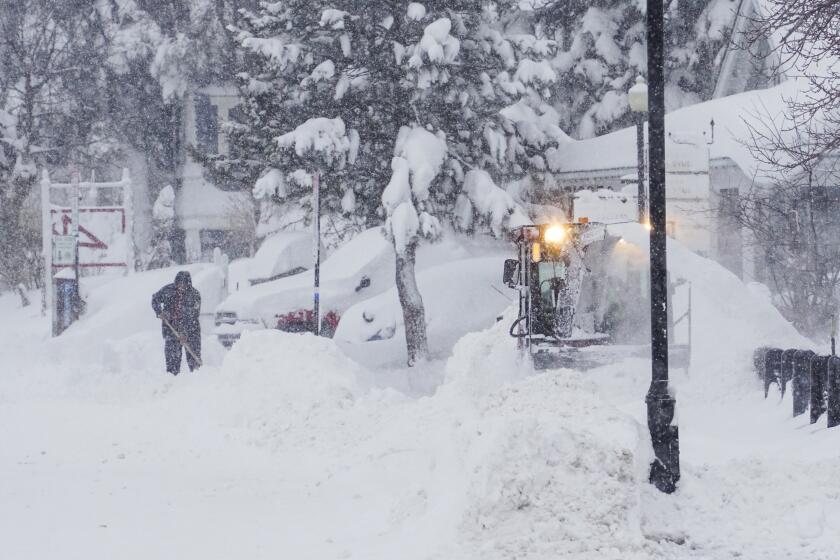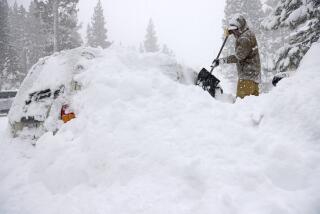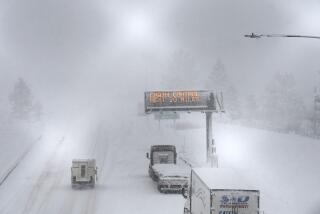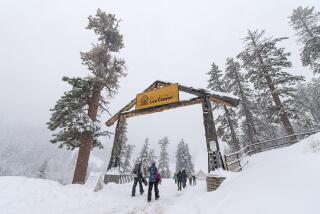Heavy snow forces Colorado flight cancellations, shuts down highway access to ski resorts
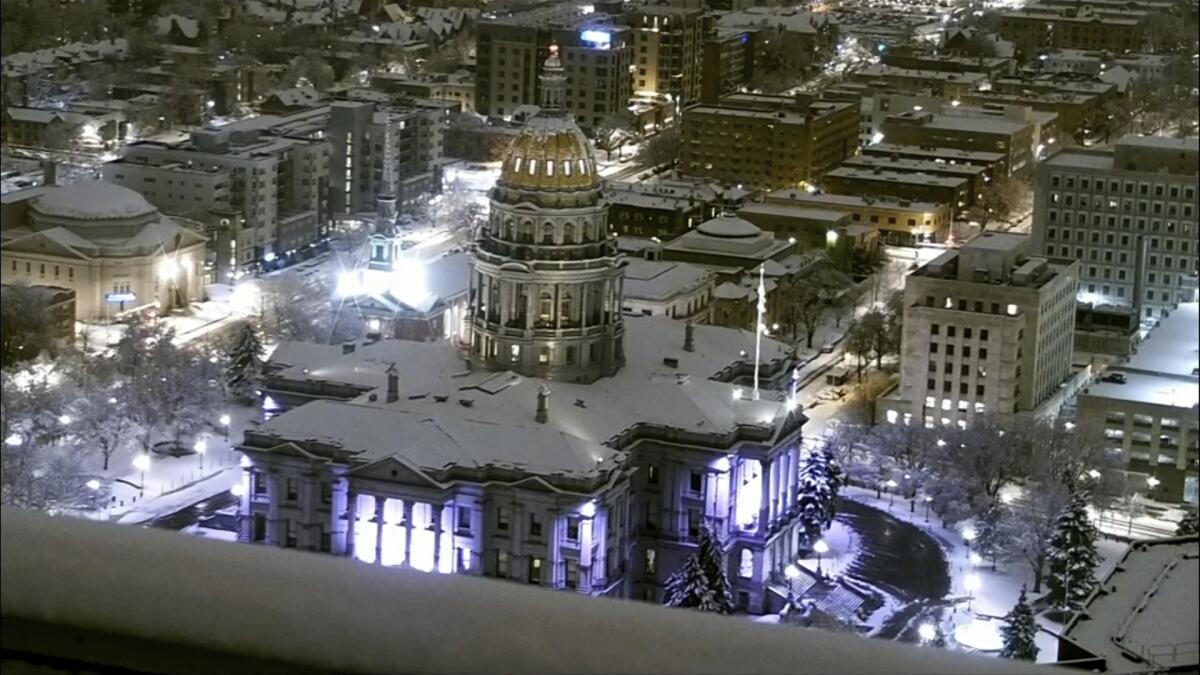
A major storm dumped heavy snow in Colorado on Thursday — forcing flight cancellations and shutting down a highway that connects Denver to Colorado ski resorts.
The storm, which began Wednesday night, delivered the slushy, wet snow typical for March, one of the snowiest months in Denver, and wasn’t expected to wind down until Friday morning. The heaviest accumulations were expected in Colorado’s Front Range region, where the eastern plains meet the Rocky Mountains and the vast majority of the state’s population lives. Most of the snow was falling in the foothills west of Denver.
Those higher elevations had up to 3 feet of snow by Thursday afternoon and more than a foot more was forecast by Friday morning. Denver itself got up to about 8 inches by Thursday. Up to another 10 inches was expected in the Denver area.
A stretch of Interstate 70 was closed in the Colorado mountains, following numerous reports of vehicles stranded on the highway for hours. While a boon to Colorado’s ski industry, the extreme conditions shut down several ski resorts.
Photos of a blizzard that is burying the Sierra Nevada in California in blankets of snow.
More than 75,000 customers were without power across Colorado on Thursday — about 2% of electric utility customers statewide and concentrated primarily in metro Denver and along the Front Range, according to poweroutage.us.
The storm also closed numerous schools and government offices Thursday and Denver schools were closed in advance for Friday.
Melanie Brooks was out walking her dogs Thursday morning in Denver.
“I’m kind of sad that I didn’t make it up to the mountains because now it’s tough to drive there, and I’m missing a powder day,” she said.
The Colorado State Patrol urged people to stay off the roads.
“Troopers are getting stuck trying to get to all the stranded motorists,” the patrol posted on X.
Local officials and law enforcement are urging people to stay off the road and not travel during what could be a life-threatening blizzard.
Since the storm is the rarer kind that brings more snow to the eastern half of the state rather than the mountains, it may not do much to feed the Colorado River, which supplies water to more than 40 million people in the West.
The storm started as rain in the Denver area and turned into snow. The area was expected to get 10 to 20 inches of snow, with up to 2 feet in the western suburbs, the weather service said.
Jarmila Schultz, 77, was tackling her sidewalks in shifts as the snow continued to fall.
“I have to get out early because I have to do it like four times because it’s going to snow all day,” she said, noting she has cleats on her boots to prevent her from falling. “It’s water, ice and it’s very hard for me to lift.”
The statewide snowpack by Monday had swelled to 104% of normal for the date, with a snow water equivalent of 24.4 inches. Snowpack was about 94% of its average for April 1, the date when it is typically at its deepest.
But she still loves the snow.
“You know, in my time, I skied, snow-shoed and did all this, and I think Colorado’s incredible for those type of things.”
Denver deployed 36 residential plows starting at 3 a.m. Thursday with the plan to shave the top few inches of snow off streets, to help clear paths to main streets.
Tyler Barnes, a Miami native who drove a ride-share overnight, was trying snow-shoeing for the first time Thursday morning, and found it was pretty easy.
“It was really what I hoped it would be like,” he said. “I feel confident I could walk a long way in these.”
Denver International Airport was open Thursday, but about 800 flights were canceled with nearly 200 more delayed, according to Flightaware.com.
The snowstorm comes as other parts of the country face severe weather. Massive chunks of hail pelted parts of Kansas and Missouri on Wednesday night, with storms unleashing possible tornadoes in Kansas.
Slevin writes for the Associated Press.
More to Read
Start your day right
Sign up for Essential California for news, features and recommendations from the L.A. Times and beyond in your inbox six days a week.
You may occasionally receive promotional content from the Los Angeles Times.
